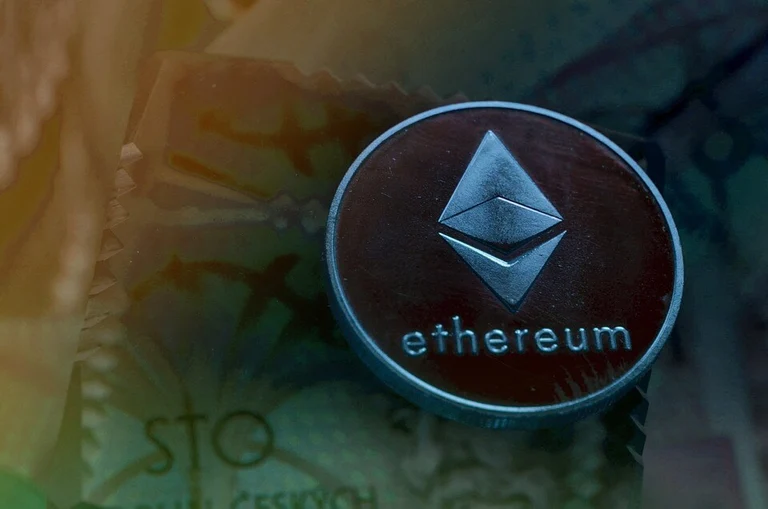Smart Contract with ETH and Alternatives
Smart contracts are rules binding a contract summarised into lines of code deployed on a blockchain (such as an ETH smart contract) for automatic execution of transactions when parties involved meeting required conditions.

A real-life smart contract illustration is a vending machine. Vending machines only dispense desired products when the user meets requirements. Failure to meet requirements leads to zero execution of contracts.
Smart contracts became popular through the Ethereum blockchain. Since then, different alternative smart contract blockchains have come into existence. However, ETH remains the choice of most developers, and the blockchain currently has over 1.45 million smart contracts deployed on its network.
However, the term "smart contract" existed long before Ethereum's creation. Smart contracts surfaced on the internet in 1994 through Nick Szabo, who wrote about the concept. In 1996, almost two years later, he wrote more about the concept in an article titled Smart Contract: Building Blocks for Digital Markets.
Nick envisioned an automatic cryptographically secure digital marketplace where businesses and transactions occur without intermediaries or the need to trust anyone. The ethereum blockchain brought the vision into reality in 2015.
What is an ETH Smart Contract?
Ethereum smart contracts are lines of codes deployed on the ETH blockchain, which enables the automatic execution of transactions between different parties when they meet the contract's conditions. Smart contracts are the core building blocks of Ethereum applications. It helps abolish the need for an intermediary or middleman during transactions.
Features of ETH Smart contracts
Auto execution: Smart contracts are self-executing without waiting for intermediaries. Once the parties involved meet the required conditions, the contract automatically executes.
Privacy and user protection: Users' data are secured under smart contracts since users' data are not required to use it. Smart contract transactions connect to users’ public addresses.
Public record: Transactions made on ETH smart contracts can be tracked easily and scrutinized because the ethereum blockchain is permissionless.
Speed: The recent Ethereum merge has helped increase ETH blockchain transaction speed from 15 tps to 100k tps.
ETH Smart Contract Use Cases
There are many ethereum smart contracts use cases, and big applications like Compound, MakerDao, and others use ETH smart contracts because of their high security and no downtime. The current Ethereum smart contract making waves is the Crypto Kitties. The platform allows users to use their ETH tokens to trade and breed virtual cats through smart contracts.
ETH smart contracts can perform different functions like creating cryptocurrency, mint NFTs; performing computations; communications, decentralised gaming, and more.

Challenges Plaguing ETH Smart Contracts
Ethereum still has a long way to go in becoming the number one world decentralised computer. Vitalik Buterin (Ethereum co-founder) states, "The current scalability sucks; blockchain inception designs rely solely on bottlenecks where individual nodes must process every transaction on the entire blockchain."
Ethereum blockchain is affected by the blockchain trilemma, even after migrating to the POS consensus mechanism. Ethereum migrated from proof of work to proof of stake consensus to increase throughput and reduce cost.
However, the ETH migration to POS drives the blockchain towards centralisation, as nodes with a high amount of staked ETH tokens stand a high chance to verify transactions - this is against the blockchain's decentralised nature.
Alternative Smart Contract Blockchains to Ethereum
There are alternative smart contract blockchains similar to Ethereum, and we will discuss some popular ones below.
Ethereum Classic
Ethereum Classic is the hard fork of the main Ethereum blockchain, which still operates on a proof-of-work consensus mechanism. It carries almost all the technical features of the main Ethereum (including smart contracts) while running at a very low cost compared to ETH.
Some people believe ETC is better than ETH because of its more decentralised nature and inability to reverse transactions. They believe Ethereum classic can flip ETH because of its low transaction cost, which can help attract more projects to the blockchain. After all, Ethereum is currently 23 times bigger than Ethereum Classic.
Pros: Ethereum Classics has the potential to skyrocket in value if there's a massive switch to the blockchain. Such a switch is possible due to its low transaction cost since ETC and ETH have almost the same blockchain functions.
Cons: Ethereum Classics has few projects on its blockchain and has suffered the "51%" attack many times due to its smallness.
Solana
Solana blockchain is a network that hosts and helps decentralized applications scale. It's a permissionless blockchain run by the Solana Foundation. The Solana labs, based in San Francisco, US, developed the blockchain.
Solana processes transactions faster than some of its counterparts (like Cardano) and offers very low transaction fees. Solana reached an all-time high in 2021 when the network increased in value by 12,000% with a then-market cap of over $66 billion.
However, the blockchain also suffered setbacks losing more than $11.71 billion in market cap due to the current bear market and other events like attacks from hackers.
Pros: Solana is more decentralized than Ethereum and offers low transaction fees.
Cons: Solana has suffered severe hacks and lost a lot of funds to hackers in the process, making some people skeptical about its security.
QTUM
Qtum is an open-source off-layer scaling solution with a proof of stake p2p network. Qtum combines both attributes of Ethereum and Bitcoin to create a hybrid blockchain with a BitCoin core feature (security) and an ethereum smart contract.
Pros: Qtum is one of the most secured blockchains for smart contract deployment.
Cons: Qtum has second-layer storage, which some developers see as a centralization attribute, which is against the core principle of blockchain technology.
Cardano
Cardano is a permissionless smart contracts blockchain that runs on a proof-of-stake Ouroboros consensus mechanism. The blockchain offers a groundbreaking network that provides privacy protection to decentralised applications on the network without sacrificing any other key features of blockchain technology, e.g. security and decentralisation.
Pros: Cardano offers privacy to decentralised apps better than most of the alternative smart contract blockchains. It operates a fully open-source blockchain with low transaction fees compared to Ethereum.
Cons: Cardano has been in the blockchain space since 2017, but the network has not seen any significant growth in value compared to Solana and Ethereum.
Neo
Neo is a permissionless blockchain suitable for hosting dApps (decentralised applications), smart contracts, and ICOs. The blockchain is popularly referred to as Chinese Ethereum in terms of functionality. Neo achieves consensus through a decentralized Byzantine Fault Tolerant (a fast and energy-efficient consensus mechanism), which is different from Ethereum's proof of stake.
Neo processes 10,000 tps, and the network allows different computer languages than other smart contracts blockchains. Developers can build dApps on Neo through; C# (see sharp), Java and provisions for Go and Python are on the way.
Pros: Neo's ability to allow different computer codes and transaction speeds gives it an edge over most alternative smart contracts blockchains. Also, the blockchain has corporate partnerships in Asia, including the Chinese government, which helps guarantee its growth.
Cons: Neo blockchain is believed to be highly centralised and is currently unfit compared to other blockchain projects like Ethereum, Cardano and others. Also, the NEO Foundation controls 6 of its eight consensus nodes, which points towards centralisation.
FAQs:
Q1. Does ETH have smart contracts?
Yes – Ethereum is regarded as the mother of all smart contracts because the blockchain fine-tuned and propagated the concept into what it is today. Ethereum is a permissionless blockchain that creates a P2P (peer-to-peer) network which securely verifies and executes application codes - smart contracts. Smart contracts allow network participants to execute transactions without a trusted central authority.
Q2. How many smart contracts are on ETH?
At the peak of the Ethereum smart contract in 2021, there were over 2.5 million smart contracts on the blockchain, according to Yahoo Finance. However, in the first quarter of 2022, there were more than 1.45 million smart contracts on the ETH blockchain. These numbers will only continue to grow.
Q3. Should I stake my ETH for ETH2?
ETH 2 is the upgraded version of the old ETH, and it operates on shading and proof of stake consensus mechanism, while the latter runs on a proof of work.
Staking your ETH for ETH2 is a personal decision. However, ETH2 is more advanced and scalable than ordinary ETH. ETH2 processes 100,000 transactions per second (tps), compared to the ordinary ETH 15 tps. ETH2 can attract more investors than ordinary ETH - this will help increase the blockchain's value over time.
